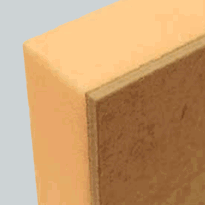Types and Materials Used in Insulated Blockwork
What're the different types and materials used in insulated blockwork, and how do they contribute to the structure's thermal performance and structural integrity?
Insulated blockwork encompasses a variety of types designed to meet diverse construction needs. Standard blocks are commonly utilised for straight walls, providing essential load-bearing support. For corners and angled walls, specialised blocks such as 90 and 45-degree blocks are employed, ensuring precise fit and stability. Additionally, cement-based blocks incorporating materials like cement-bonded wood fibre or polystyrene beads are utilised to enhance insulation capacity while maintaining structural strength.
A notable innovation in this field is the use of Insulating Concrete Forms (ICFs). These forms combine insulation and formwork in a single unit, offering excellent thermal performance alongside robust structural clarity.
The materials used within these blocks play a vital role in their effectiveness. Expanded polystyrene (EPS), extruded polystyrene (XPS), polyurethane foam, and polyisocyanurate are common choices, each selected based on their insulation properties, durability, and moisture resistance. These materials significantly reduce heat transfer through the walls, thereby improving the thermal efficiency of the structure.
The different block types and insulating materials work together to ensure the integrity and resilience of the building. The variety of block shapes provides architectural flexibility and ensures that structural loads are adequately supported. The inclusion of high-quality insulating materials enhances the thermal performance, which contributes to energy efficiency and indoor comfort.
Together, these elements enable the creation of highly efficient, durable structures suitable for a wide range of architectural styles and environmental conditions across the United Kingdom.
Construction Process and Structural Benefits of Insulated Blockwork
The construction process of insulated blockwork involves a sequence of carefully coordinated steps designed to ensure both structural stability and optimal thermal performance. First, site preparation and excavation establish a level and stable foundation.
Next, footings are formed and reinforced in accordance with engineer specifications to support the load-bearing walls. Following this, blocks are laid in a running bond pattern, starting with corner blocks, and are interconnected with clips or ties for added stability.
Reinforcement is then incorporated by placing horizontal and vertical reinforcement bars within the cavities of the blocks before pouring concrete, resulting in a strong, monolithic wall.
This process yields walls with enhanced rigidity, resistance to tensile and shear stresses, and improved thermal insulation properties. The integrated insulation within the blocks not only contributes to the structural integrity but also aids in reducing heat transfer, leading to durable, energy-efficient buildings that meet modern UK standards for comfort and sustainability.
Future Trends and Applications of Insulated Blockwork
Advances in technology and changing industry priorities are shaping the future of insulated blockwork, with an emphasis on improving performance, sustainability, and flexibility. The market is expected to grow markedly, driven by rising awareness of energy efficiency, increasingly stringent building regulations, and the requirement for natural disaster resilience.
Emerging technologies such as intelligent insulation, biodegradable bricks, and eco-friendly materials are elevating construction quality and environmental standards. These innovations enable real-time monitoring, optimise insulation performance, and promote sustainable construction practices. The integration of smart sensors into insulated blocks allows for continuous assessment of thermal performance and moisture levels.
In terms of application, insulated blockwork is becoming increasingly utilised in residential, commercial, and high-rise developments due to its speed of installation, durability, and energy-saving benefits.
Furthermore, government incentives and the utilisation of digital tools are helping to widen its adoption, ensuring that insulated blockwork remains a vital element of modern, sustainable infrastructure projects.
Conclusion
Insulated blockwork provides an effective solution for enhancing thermal efficiency and structural stability in construction projects. By carefully selecting suitable materials and adhering to a systematic building process, it can significantly improve the energy performance and durability of structures. Advances in insulation technology and the use of sustainable materials suggest that insulated blockwork will continue to play a vital role in future building developments. Its versatility makes it suitable for a wide range of applications, ensuring long-term benefits in safety, cost-efficiency, and environmental impact for both current and future construction practices.


























































































































































































































































































































































































